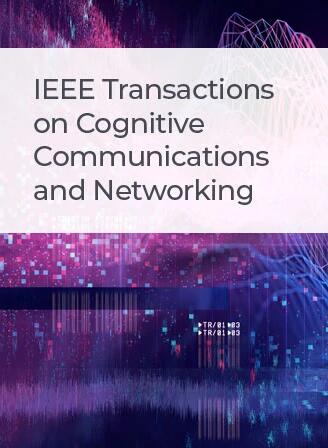基于残差cnn的未知信道注意辅助GAN收发器
IF 7
1区 计算机科学
Q1 TELECOMMUNICATIONS
IEEE Transactions on Cognitive Communications and Networking
Pub Date : 2025-01-09
DOI:10.1109/TCCN.2025.3527689
引用次数: 0
摘要
智能收发器和无线信道形成自编码器(AE)结构,通过端到端(E2E)学习,显著提高了通信性能。近年来,在无线信道未知的情况下,利用残差生成对抗网络(GAN)来模拟真实信道,从而方便了发射机的训练。这些模拟信道的质量直接影响到智能收发器对实际情况的适应性。然而,训练的不稳定性和全连接层的使用限制了残差GAN捕捉真实通道有效特征的能力。为了解决这些限制,我们提出了一个注意辅助残差GAN (AAR-GAN)模型。该方法利用卷积神经网络(CNN)构建GAN模型,并对CNN应用挤压激励通道注意块,自动确定特征通道的重要性。此外,我们采用残差CNN (RCNN)来构建收发器,使学习更流畅,更一致,从而提高通信性能。仿真结果表明,采用ar - gan模型作为未知信道的基于rcnn的智能收发器在AWGN、瑞利衰落和真正的DeepMIMO信道中显著提高了不同比特长度的误码率和分组误码率。本文章由计算机程序翻译,如有差异,请以英文原文为准。
Residual CNN-Based Transceiver With Attention-Aided GAN for Unknown Channels
Intelligent transceivers and wireless channels form an autoencoder (AE) structure, demonstrating a significant improvement in communication performance through end-to-end (E2E) learning. Recently, when the wireless channel is unknown, a residual generative adversarial network (GAN) has been utilized to simulate the real channels, thus facilitating the transmitter training. The quality of these simulated channels directly affects the adaptability of the intelligent transceiver to real-world situations. However, the training instability and the use of fully connected layers limit the residual GAN’s ability to capture effective features of real channels. To address these limitations, we propose an attention-aided residual GAN (AAR-GAN) model. This approach utilizes a convolutional neural network (CNN) to construct the GAN model and applies a squeeze-and-excitation channel attention block to CNN to automatically determine the significance of the feature channel. Furthermore, we employ a residual CNN (RCNN) to construct the transceiver, enabling smoother and more consistent learning, thus improving the communication performance. Simulation results demonstrate that our RCNN-based intelligent transceiver with the AAR-GAN model as an unknown channel significantly improves the bit error rate and block error rate for various bit lengths in the AWGN, Rayleigh fading and real DeepMIMO channels.
求助全文
通过发布文献求助,成功后即可免费获取论文全文。
去求助
来源期刊

IEEE Transactions on Cognitive Communications and Networking
Computer Science-Artificial Intelligence
CiteScore
15.50
自引率
7.00%
发文量
108
期刊介绍:
The IEEE Transactions on Cognitive Communications and Networking (TCCN) aims to publish high-quality manuscripts that push the boundaries of cognitive communications and networking research. Cognitive, in this context, refers to the application of perception, learning, reasoning, memory, and adaptive approaches in communication system design. The transactions welcome submissions that explore various aspects of cognitive communications and networks, focusing on innovative and holistic approaches to complex system design. Key topics covered include architecture, protocols, cross-layer design, and cognition cycle design for cognitive networks. Additionally, research on machine learning, artificial intelligence, end-to-end and distributed intelligence, software-defined networking, cognitive radios, spectrum sharing, and security and privacy issues in cognitive networks are of interest. The publication also encourages papers addressing novel services and applications enabled by these cognitive concepts.
 求助内容:
求助内容: 应助结果提醒方式:
应助结果提醒方式:


